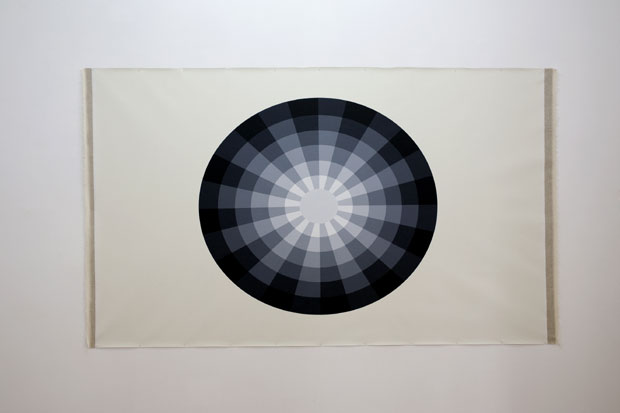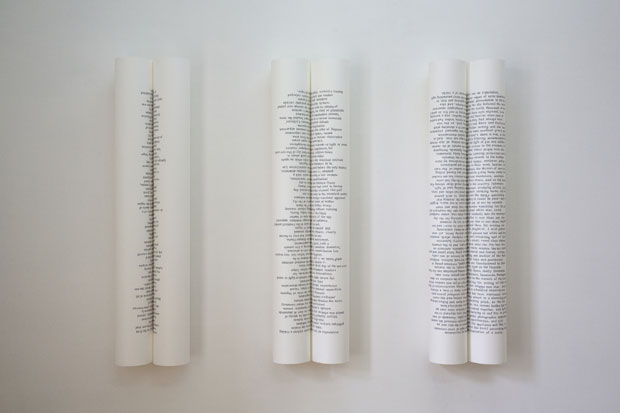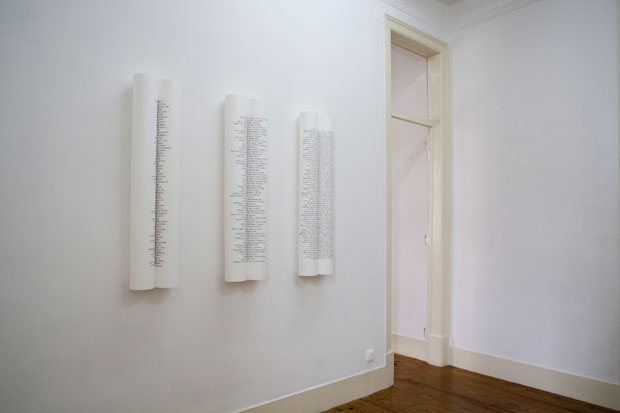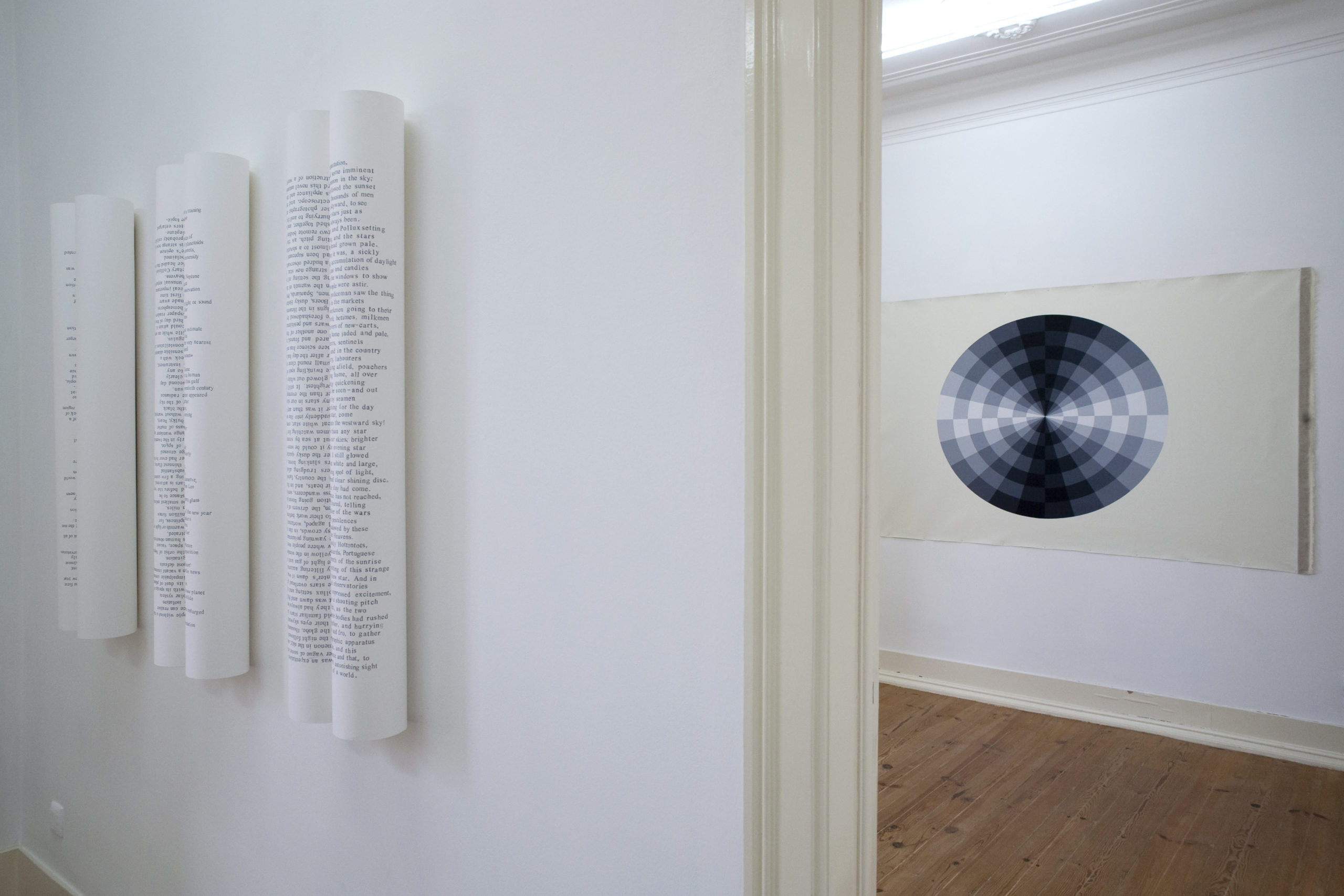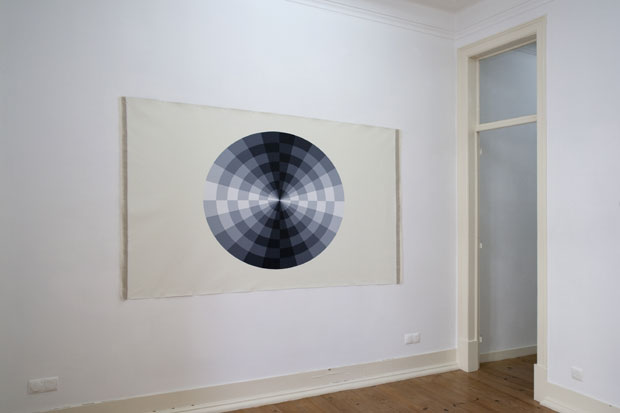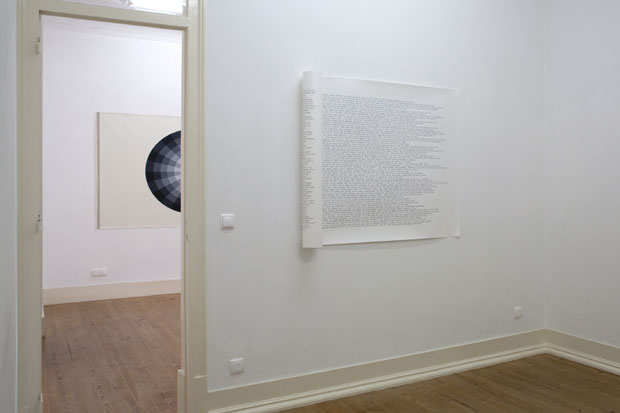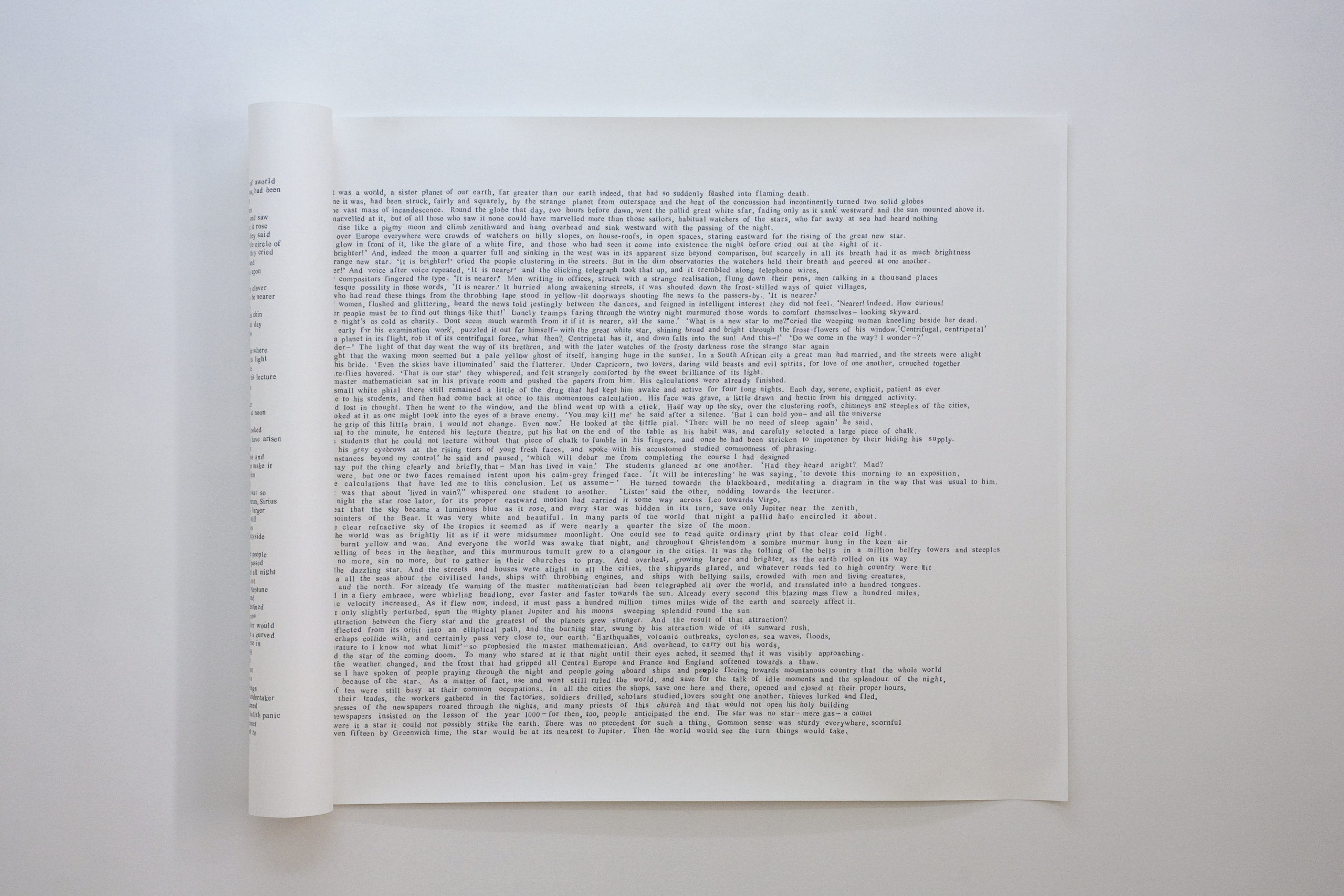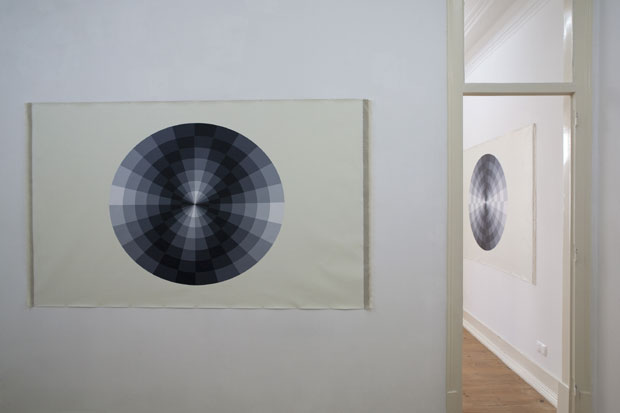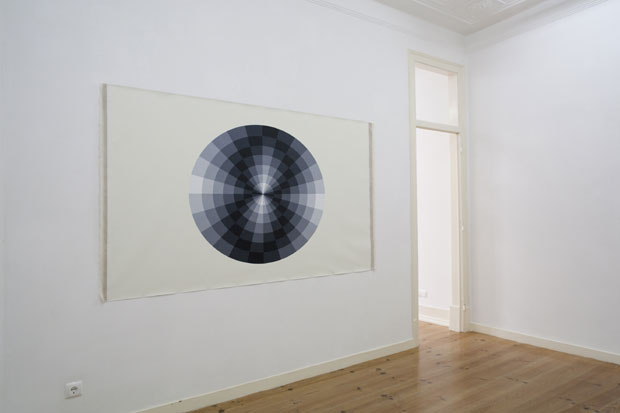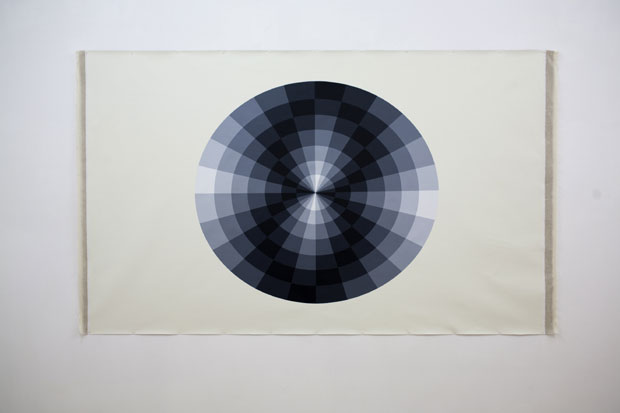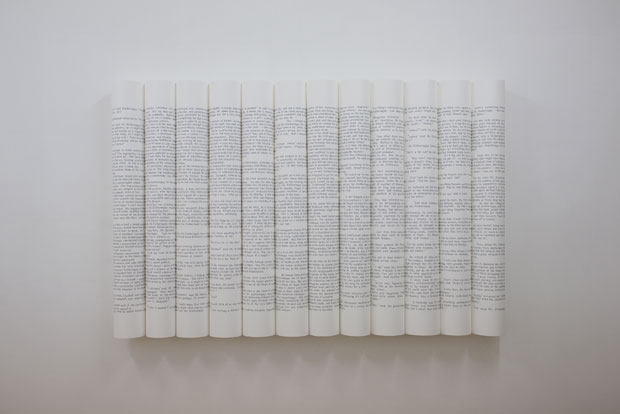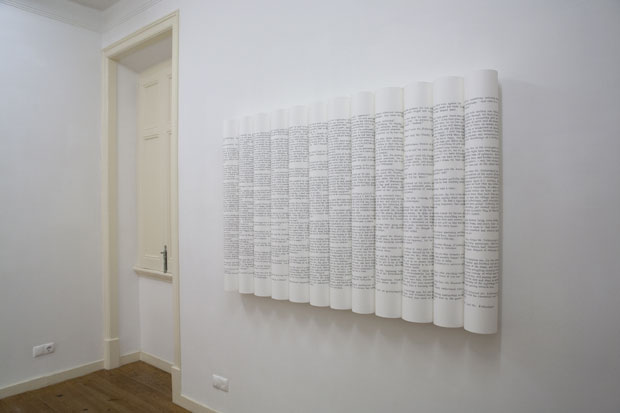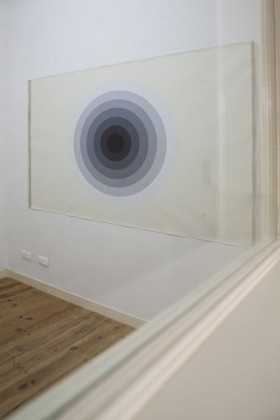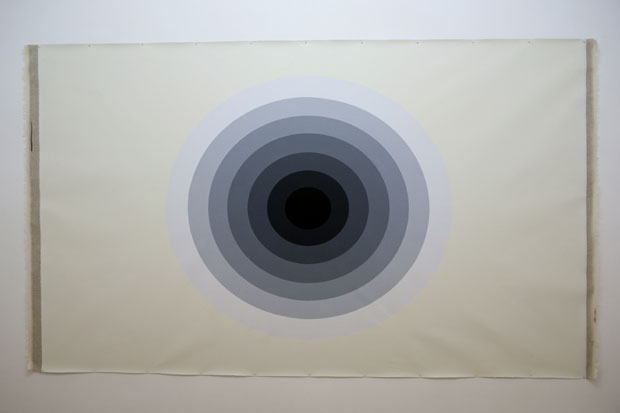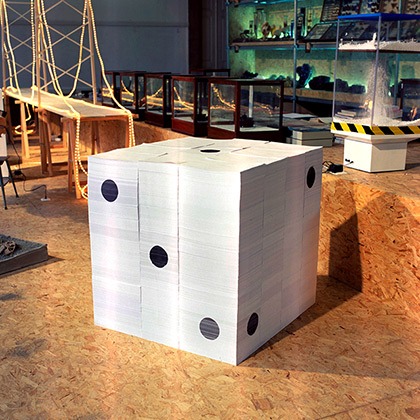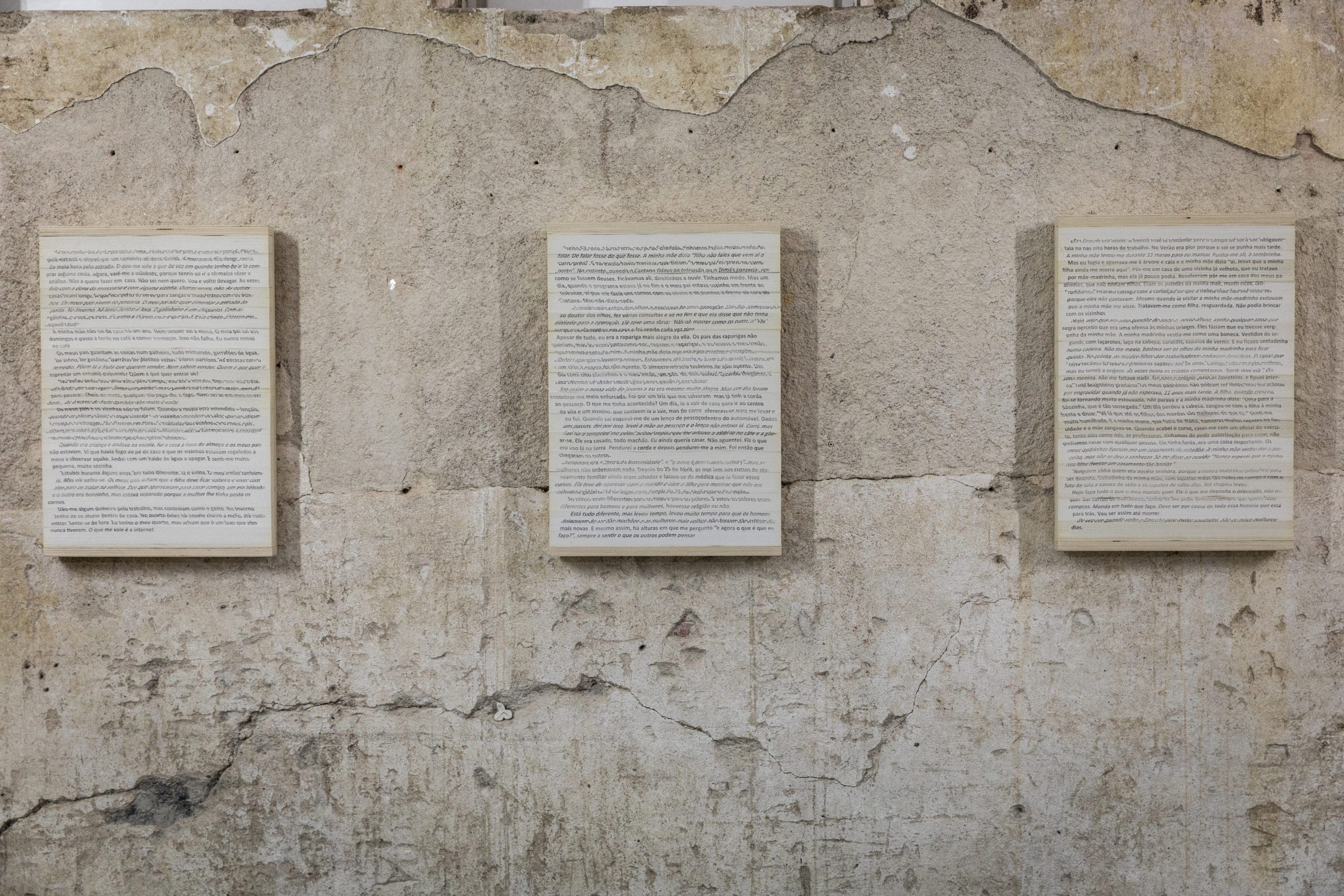Solo exhibition, Caroline Pagès Gallery, Lisbon
THE KAPPA EFFECT, JOSÉ ROSEIRA
“… As I write these words, even so as to be able to write them, I am pretending to a unity that, deep inside myself, I know now does not exist.”
William Hamilton
The subject of networks, information organization, visual essay on realities as diverse as the correlations between cultural agents, elements of a bibliography or specific events are the recurring object of Mafalda Santos’ work. Following his path, we can see the development of a research that has become progressively more complex, the contours of which are already visible in the individual exhibition that he presents in 2004, in the PêSSEGOpráSEMANA space, one of the stages of the alternative scene in Porto between 2000 and 2007, that she was also a programmer. In Blackboard (2004), the artist moves towards the representation of networks through the organization of the names of their actors, work that will continue to develop in the Working Environment, carried out within the scope of the Terminal project (Fundição de Oeiras, 2005), and in Maze (Museum of Contemporary Art of Elvas, 2009). In Too Loud, Solitude (Mad Woman in the Attic, Porto, 2006) explores an emotional bibliography, reproducing a mental structure that can be identified with a learning process. In 2009, still in this line, he presents One day every wall will fall (Galeria Presença, Porto) where he relates political facts to international exhibitions held after the fall of the Berlin Wall.
The Kappa Effect, an exhibition produced for the Caroline Pagès Gallery, emerges as the continuation of this process and especially linked to the work presented in 2010 under the title The Great Unconformity (Sala do Veado, Lisbon), where Mafalda Santos problematized the inscription processes in the construction of the narratives. In the work now presented, the artist extends the scope of this issue to the nature of perception. If error, deviation and omission play a fundamental role in the construction of our history, we must also arm ourselves against the limits and deviations inherent in the way our cognitive processes encode the world. If memory was discussed in the first exhibition, now, in The Kappa Effect, the central problem is perception. The series of acrylic paintings, with shapes evoking irises, denounces this intention and suggests the idea of a concentric movement – defining the place of language, such a Cartesian theater. In view of this centrality, we are obliged to articulate the idea of the self, soon contradicted by the installations on the wall (paper drawings), in counterpoint to our intuition, presenting samples of time doubled over itself. These drawings do not suggest a centrality, rather they propose the idea of a convoluted, organic system, which cannot be touched because it is, itself, participated by all its elements. The reference to Tales of Space and Time, short stories by HG Wells within which time and space fold – and where we can find fantastic bridges between a London antiquarian and a Martian tower – represents the transforming ability of our cognitive systems, which have in mind themselves the key to time and are able to change the structure of space.
After all, there is no story of ours – we are our story. All these processes – and here we include error, revisionism, omission, amnesia and deception – are elements of a body and collaborate in the construction of a competitive system that comes to us in the idea of the self. The progressive detection of all these errors, failures and deviations, constitute a first set of clues that, in the last 50 years, started to suggest that the unity of the self would be an illusion imposed by language and allowed to start to dismantle the notion of Cartesian theater, a place in the brain where consciousness would form. Apparently, everything is more complex, and “I” will be nothing more than a resonance – millions of simultaneous operations, participated by an immeasurable number of functions, often in conflict, overlapping, redundant, folded over each other.
With “The Kappa Effect” Mafalda Santos jumps from non-conformity, from failure to register or to memory, to direct problems of perception. Although we perceive time as continuous and indivisible, in the processes that organize and give rise to the phenomenon of consciousness there are countless cases of “intertemporal negotiations”, overlaps between past and future events that prevent us from accessing an exact chronology of the sequence of events. events in which we participate. The term kappa effect refers to a phenomenon that can be observed considering, for example, a trip made in two parts with the same duration. Between these two parts, the one that understands the most distance will always be perceived as the most time consuming. In suggesting a trip, the artist presents sensitive proposals, focusing on the deformations with which we perceive and conceive time and space. The idea of narrative offers itself curled up. As conscious structures between linear time and what we understand, we are limited to the constraints of the second.
